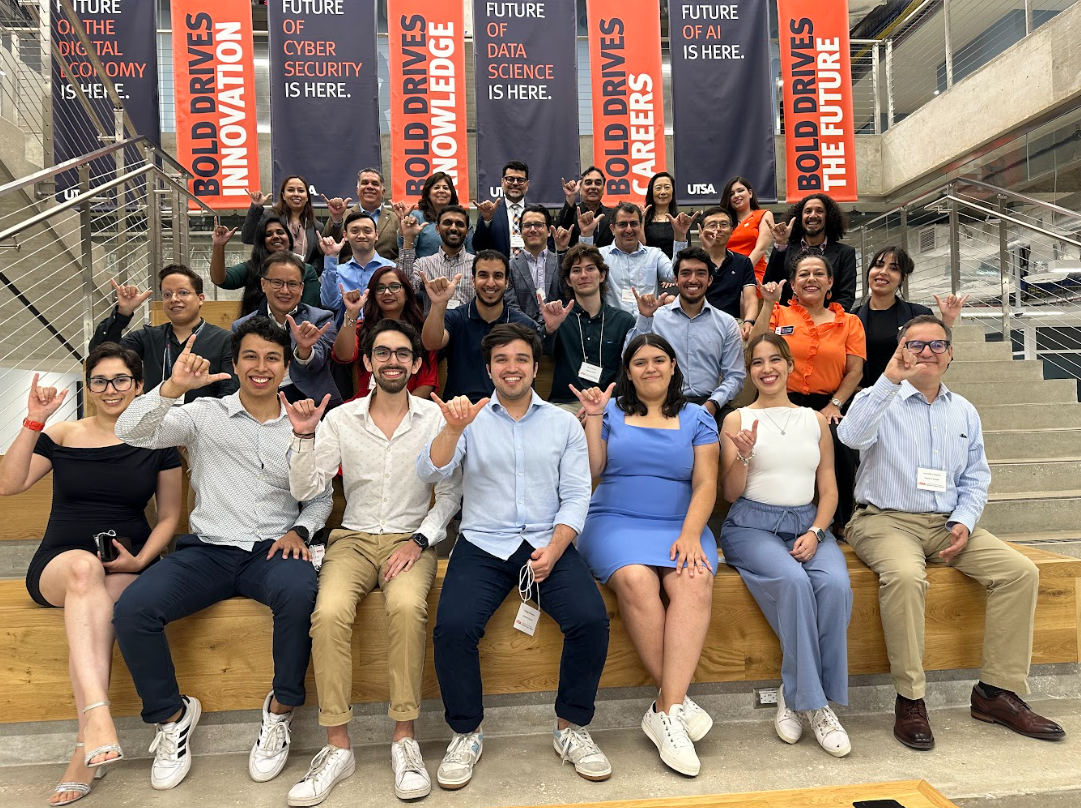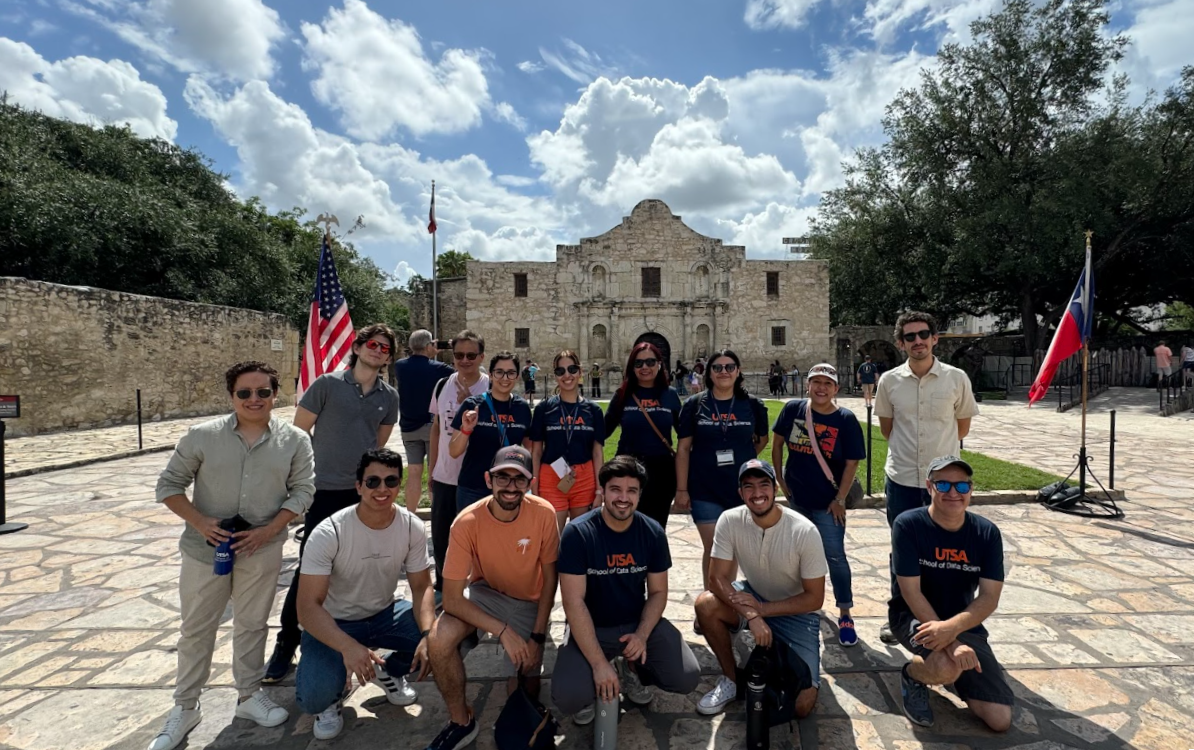Posted on September 12, 2024 by UTSA School of Data Science
SDS wraps up successful international immersion program
The UTSA School of Data Science (SDS) successfully concluded its first annual Summer Immersion Experience, a monthlong program enabling twelve international students from Tec de Monterrey and the Instituto Tecnológico Autónomo de México (ITAM) to assist SDS Core faculty in their research and explore the city of San Antonio. According to Peyman Najafirad (Paul Rad), SDS associate director of research, the program was a resounding success, providing the participating students with opportunities for both professional and personal exploration.
“The students had a rich experience, engaging with cutting-edge artificial intelligence and data science projects while taking in San Antonio’s vibrant culture,” he said. “Their curiosity and active participation exceeded my expectations, with many expressing that the immersive, hands-on learning and cultural exchanges were transformative.”
expectations, with many expressing that the immersive, hands-on learning and cultural exchanges were transformative.”
One such student was Santiago Fernandez del Castillo Sodi, a senior applied mathematics and data science student at ITAM. Fernandez first learned of the Immersion Experience while competing in the 2024 Draper Competition. He was drawn to the advanced research being conducted at San Pedro I, which he says aligned with his own professional ambitions and offered further opportunities to network with fellow students from Mexico.
“I’d been looking for opportunities to do research,” Fernandez says, “but most of the ones I found weren’t proper academic research with Ph.D. students and professors. So, when I saw that this program was very close to the life of a Ph.D. student, I was excited about it.”
The research that Fernandez and his team performed encompassed two primary projects. The first was implementing an algorithm to help pedestrians optimize walking routes in sunny cities like San Antonio. By using maps of San Antonio’s buildings and sidewalks provided by UTSA, the team built a mobile application that allows users to select a route between two points, either maximizing shade on the route, or balancing shade levels with route distance. The team’s second project also used geospatial data, this time to build and test seven algorithms to match electricity providers with electric vehicle drivers to minimize the distances involved.
In addition to the technical knowledge gained, Fernandez says the Summer Immersion Experience also offered more intangible benefits, such as learning how to work with others, how to navigate a foreign country alone, and what life is like as a Ph.D. student.
“Working in a team of people you’ve just met, who have different ways of approaching problems and organizing their work, is very exciting but also challenging. Learning how to work with new people with very different backgrounds required effective communication to find a way of working that felt good for everyone while also advancing the projects,” he said. “I will definitely use these new findings to push my career forward and get closer to my dream of being a Ph.D.”
Likewise, being in San Antonio provided the students the opportunities to see first-hand the innovations that are taking place in San Antonio as well as meet key players in the industry located in the city. Between these excursions, the work with SDS core faculty, and the collaboration between some of the newest talent from TEC and ITAM, Fernandez says he found the experience highly enriching and would encourage other students to apply for future sessions.
“As cliché as it sounds, just do it,” he urged. “It is a lot of fun, you’ll meet great people, and you’ll learn a lot.”

This feedback is exactly what Rad was hoping for when the program was first conceived. The success of the program has encouraged him and his team to explore ways to expand in the future, including a possible
upcoming winter session, and exploring building a hybrid model of the program to expand access to more students. Regardless of how the program expands in the future, Rad believes the 2024 Summer Session has proven its worth as a regular fixture at the School of Data Science.
“The immersion program is a fantastic opportunity for both academic growth and cultural exchange, setting the stage for faculty and students to build strong networks and apply their knowledge to real-world challenges,” he said.
As for Fernandez, he looks forward to visiting San Antonio again at some point.
“I had completely underestimated how culturally rich San Antonio is,” he said. After five weeks there I feel like I didn’t have the time to get to see all the cool things I had in mind – it’s a good reason to come back.”
For more information on the SDS Immersion Experience, visit https://sds.utsa.edu/immersion_experience/.
-Christopher Reichert


